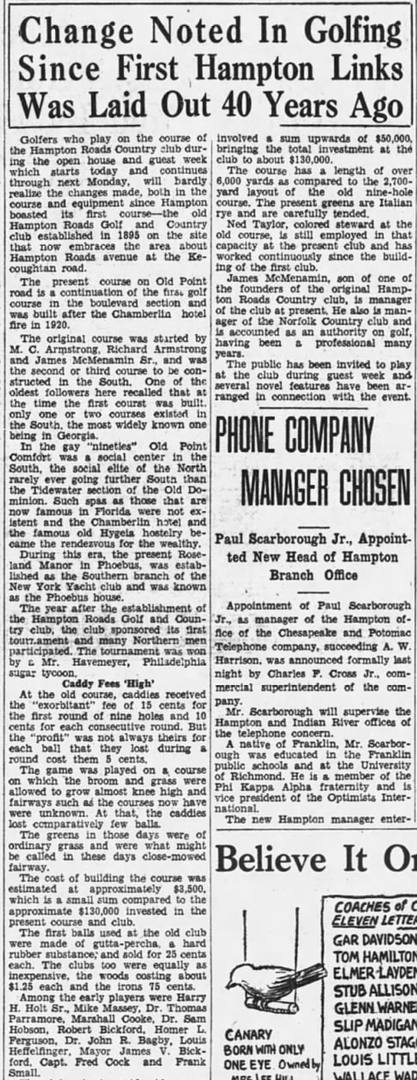1916Lakewood Golf Club (Lakewood, CO) - 18 Holes, Remodel in 1916, Still in ExistenceNot included in the 1930 Ross Booklet.Another Bendelow course that Ross supposedly reworked. What is interesting in this case is that Bendelow returned in 1921, casting a bit of doubt on Ross being there in the interim, although the June 17, 1916 The Evening Post article in post #47 above noting Frank Woodward's request for Ross to remodel a course in Denver.
Fort Myers Golf & Country Club (Fort Myers, FL) - 18 Holes, New in 1916, Still in ExistenceNot included in the 1930 Ross Booklet.One of the first Ross/McGovern combinations. The course of the private club would be purchased by the city in 1927 and operated as a municipal course.
Oct. 23, 1916 Tampa Tribune -
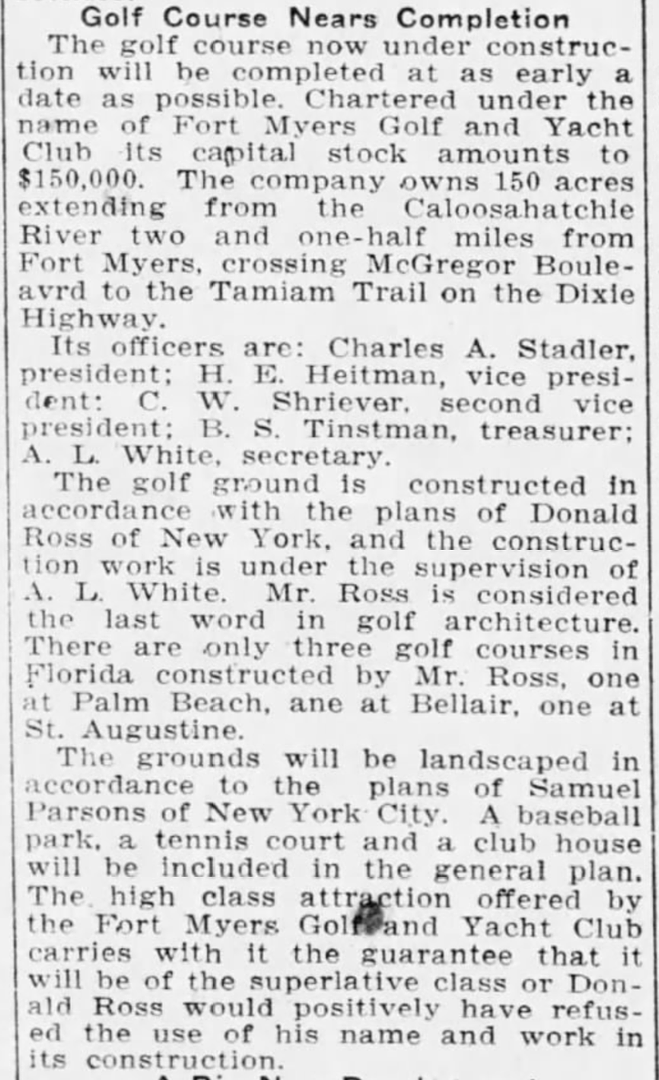
Dec. 6, 1916 Fort Myers News-Press -
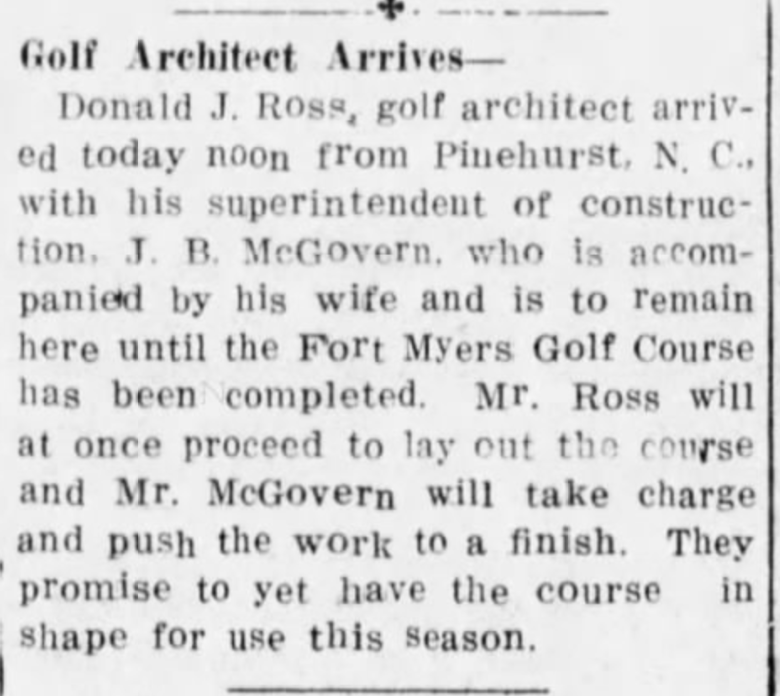
Dec. 13, 1916 Fort Myers News-Press -

Nov. 30, 1933 Fot Myers News-Press -
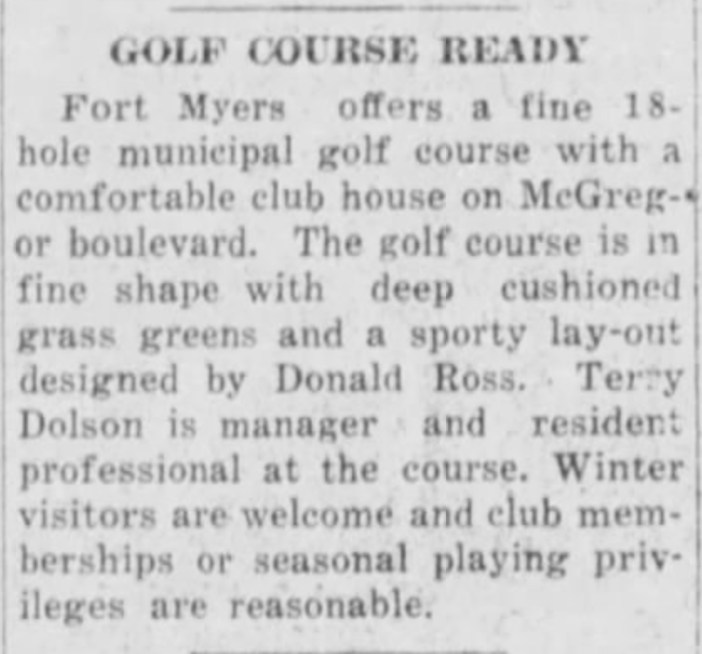
Plan of the Course -
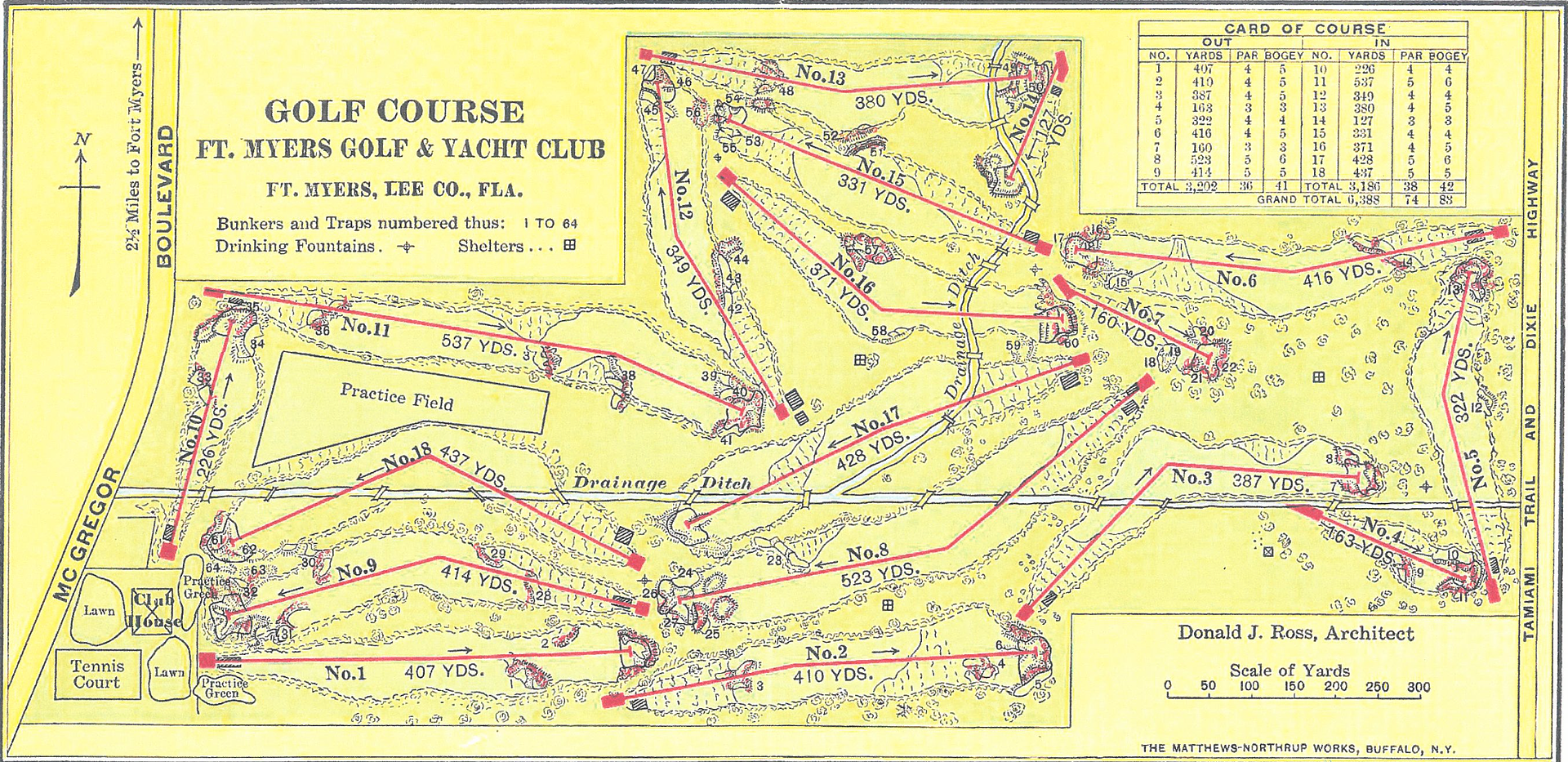 Ponce de Leon Resort & Country Club (St. Augustine, FL) - 18 Holes, New in 1916, NLEThe 1930 Ross Booklet notes 36 Holes.
Ponce de Leon Resort & Country Club (St. Augustine, FL) - 18 Holes, New in 1916, NLEThe 1930 Ross Booklet notes 36 Holes.This was originally the St. Augustine Links - North course. Ross laid out both the North and South courses in 1916, with the South course opening first.

Ross Plan -
 St. Augustine Links - South (St. Augustine, FL) - 18 Holes, New in 1916, NLEThe 1930 Ross Booklet notes 36 Holes.
St. Augustine Links - South (St. Augustine, FL) - 18 Holes, New in 1916, NLEThe 1930 Ross Booklet notes 36 Holes.See also the Jan. 8, 1916 Pinehurst Outlook and June 17, 1916 articles in post #47 above.
Aug. 20, 1915 Orlando Sentinel -
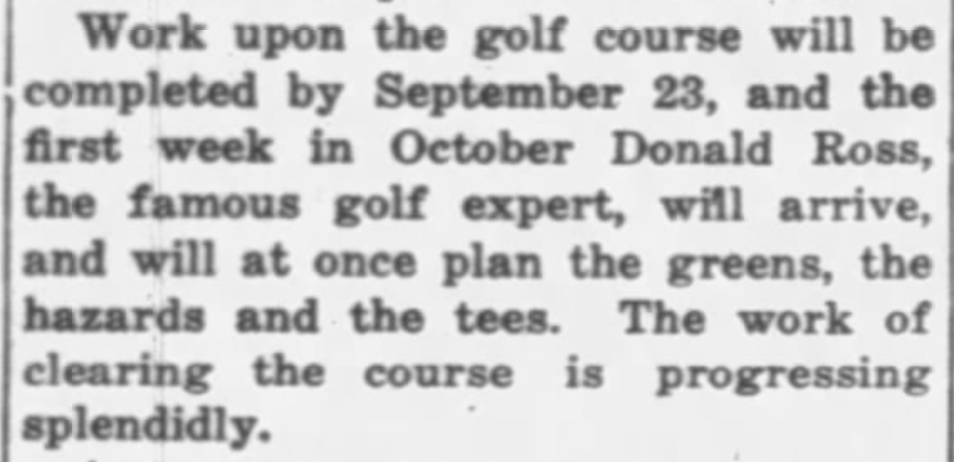
Dec. 28, 1916 Brooklyn Daily Eagle -
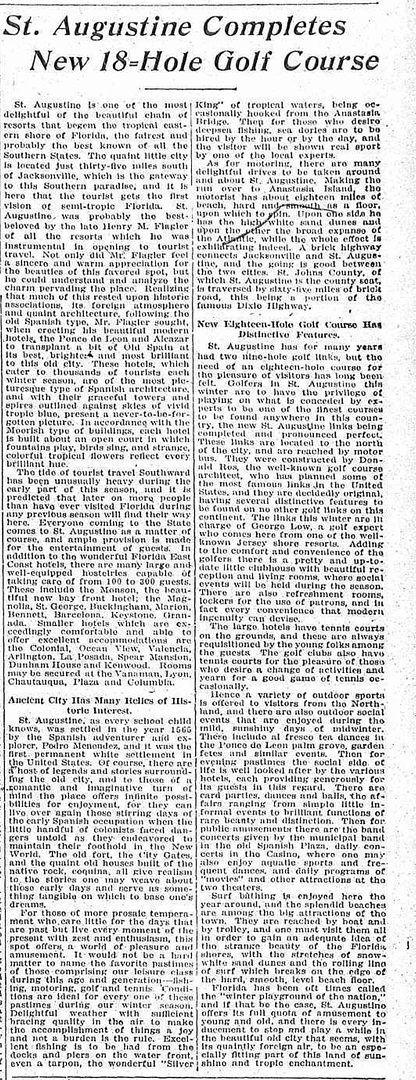 Bob O'Link Golf Club (Highland Park, IL) - 18 Holes, New in 1916, Still in ExistenceNot included in the 1930 Ross Booklet.
Bob O'Link Golf Club (Highland Park, IL) - 18 Holes, New in 1916, Still in ExistenceNot included in the 1930 Ross Booklet.Bob O'Link would be reworked by Alison about a decade later, but the first effort was Ross.
See also the June 17, 1916 The Evening Post article in post #47 above.
May 25, 1916 Chicago Tribune -
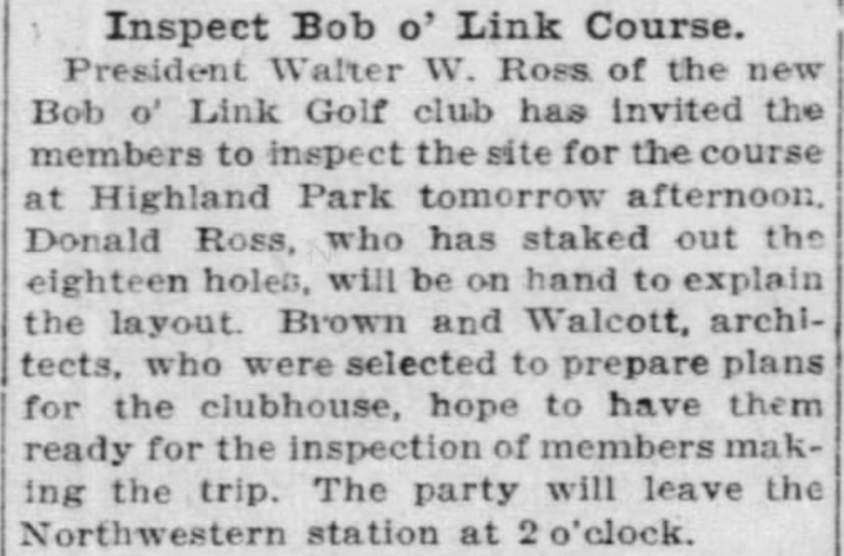
May 27, 1916 Chicago Tribune -

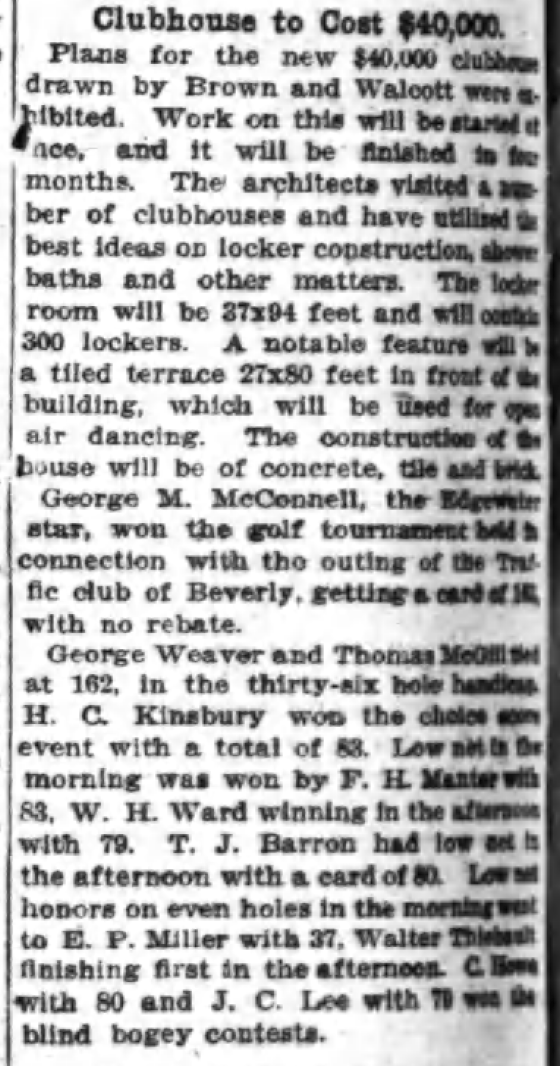
1916 Ross Plan -
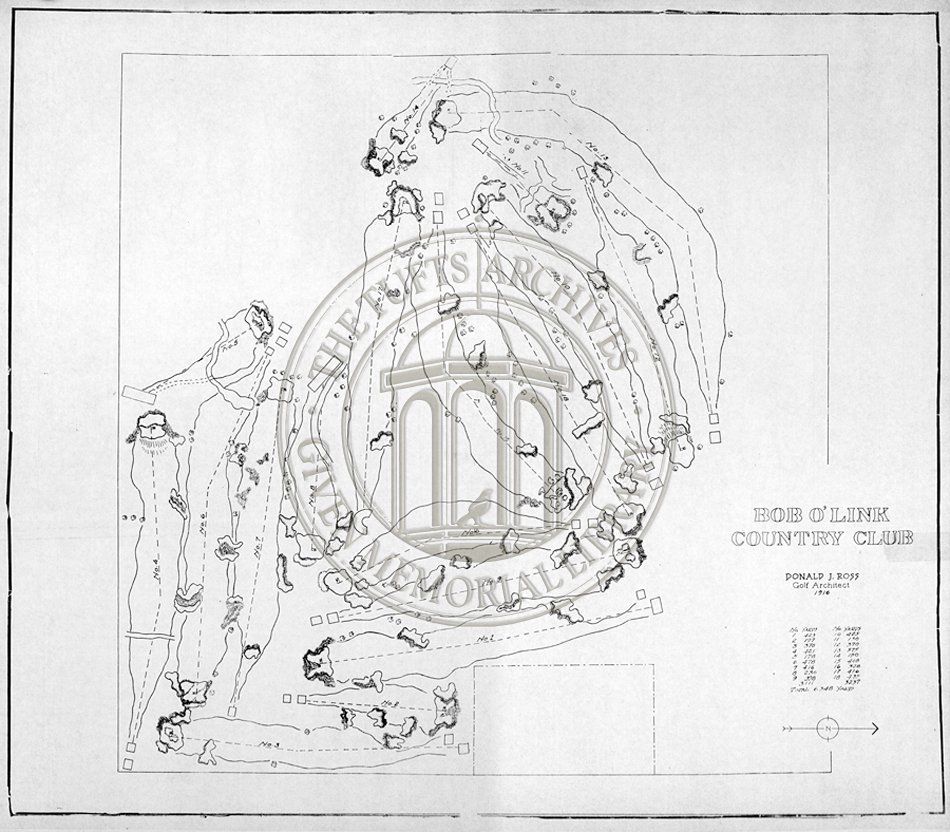 Cohasse Country Club (Southbridge, MA) - 9 Holes, New in 1916, 4 Holes, Remodel in 1930, Still in Existence2018 DRS Update - Changed to "9 Holes, New in 1918, 4 Holes, Remodel in 1927"Not noted in the 1930 Ross Booklet.
Cohasse Country Club (Southbridge, MA) - 9 Holes, New in 1916, 4 Holes, Remodel in 1930, Still in Existence2018 DRS Update - Changed to "9 Holes, New in 1918, 4 Holes, Remodel in 1927"Not noted in the 1930 Ross Booklet.See also the June 17, 1916 The Pinehurst Outlook article in post #47 above discussing Ross doing a new course in Southbridge.
The plan below was prepared in the late 1920's.
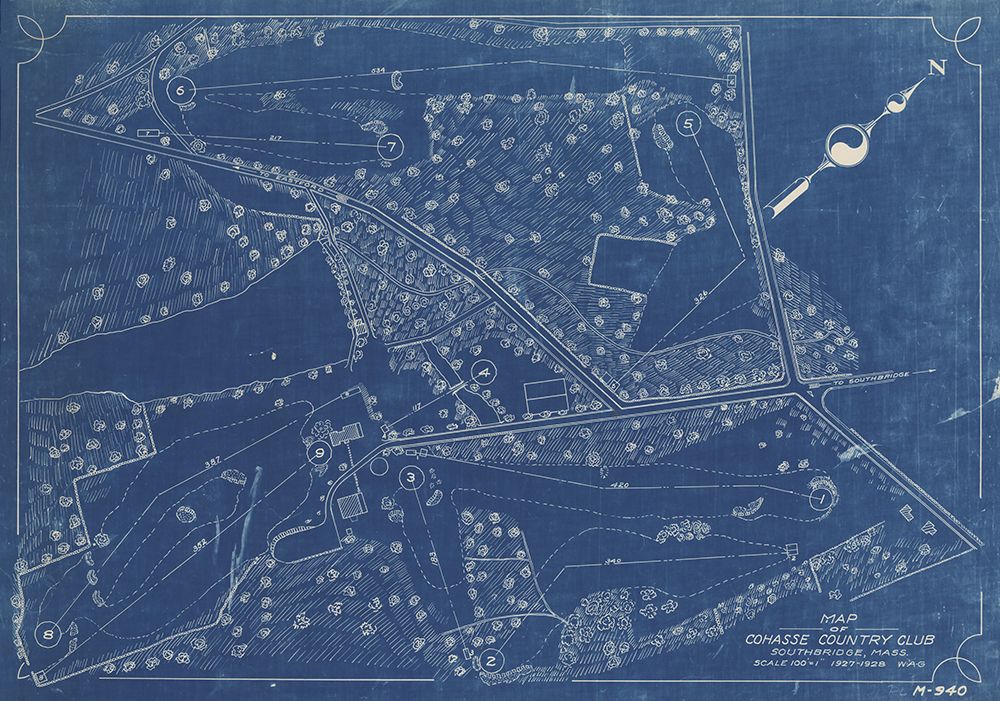 Pocasset Golf Club (Pocasset, MA) - 18 Holes, New in 1916, Still in ExistenceNot noted in the 1930 Ross Booklet.
Pocasset Golf Club (Pocasset, MA) - 18 Holes, New in 1916, Still in ExistenceNot noted in the 1930 Ross Booklet.The first article below notes the course was expanded from its original 9 holes to 18 in 1924, with Ross as architect. I have found nothing that details who did the original 9 hole course.
Aug. 17, 1924 Boston Globe -
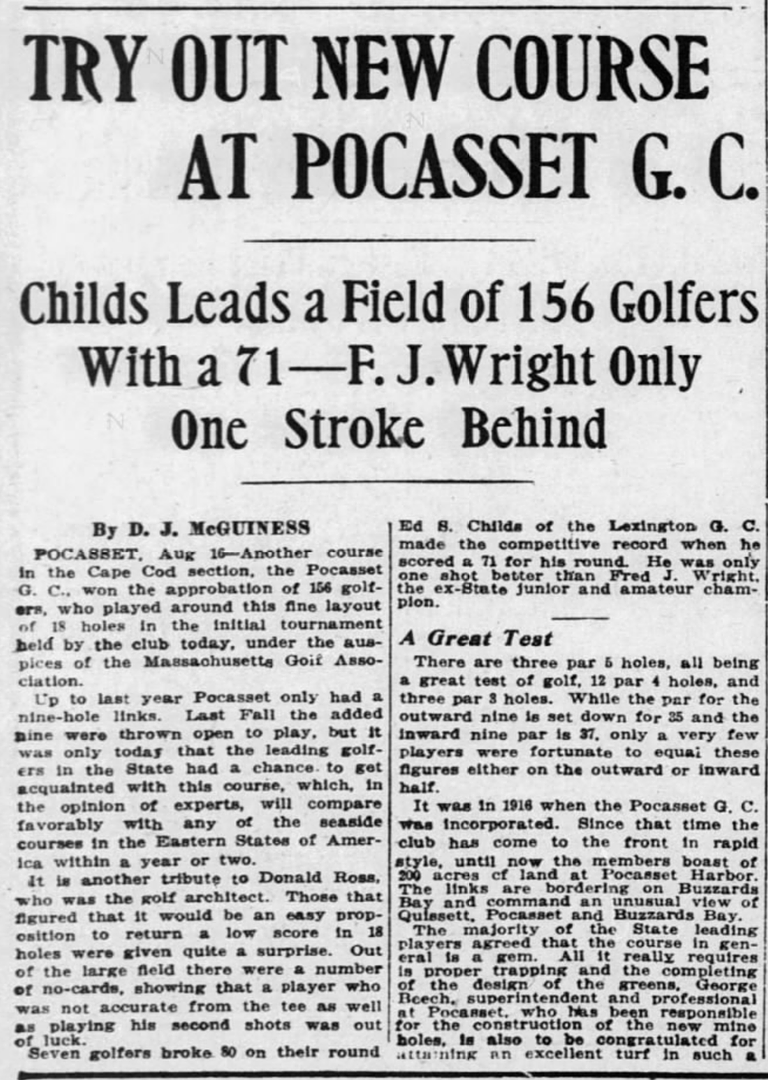
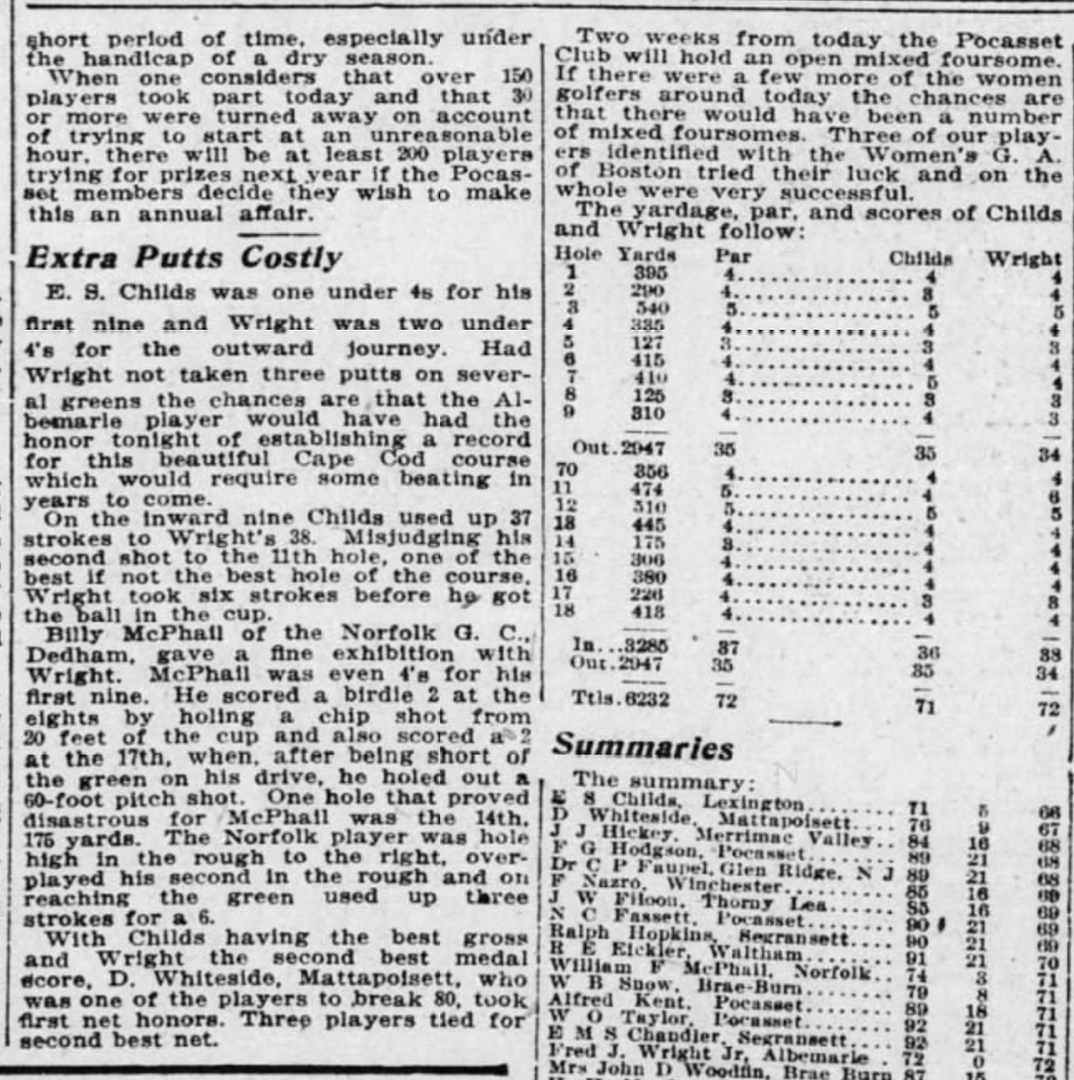
Aug. 30, 1934 Boston Globe -
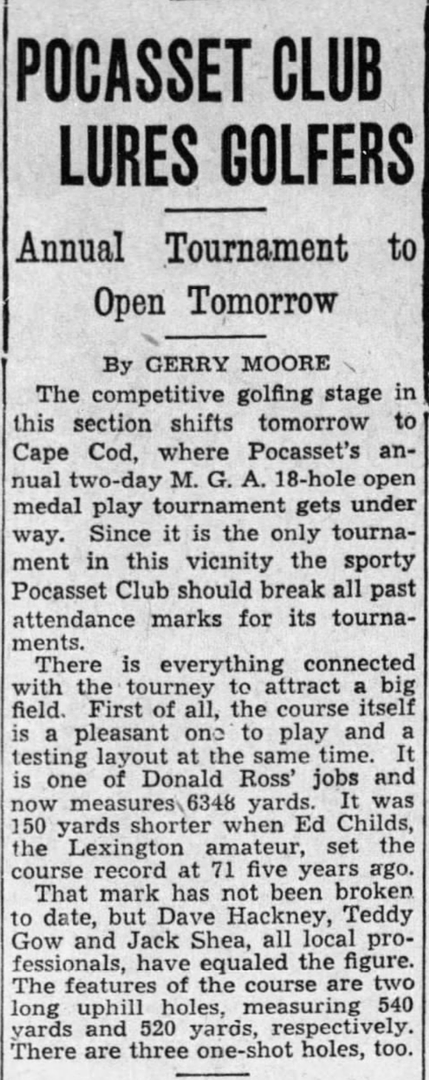 Weston Golf Club (Weston, MA) - 9 Holes, New in 1916, 9 Holes, New in 1923, Still in ExistenceThe 1930 Ross Booklet notes 18 Holes.
Weston Golf Club (Weston, MA) - 9 Holes, New in 1916, 9 Holes, New in 1923, Still in ExistenceThe 1930 Ross Booklet notes 18 Holes.Sept. 1916 American Golfer -

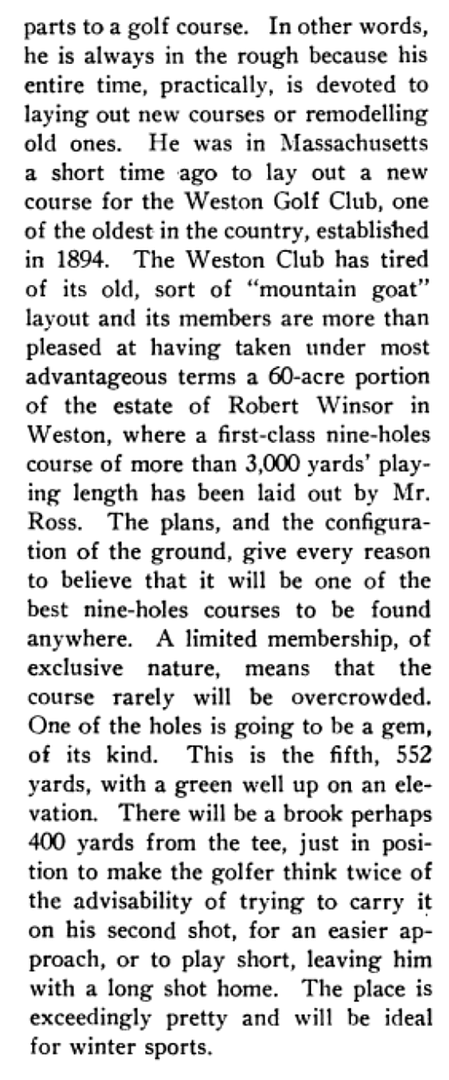
Sept. 2, 1917 Boston Globe -
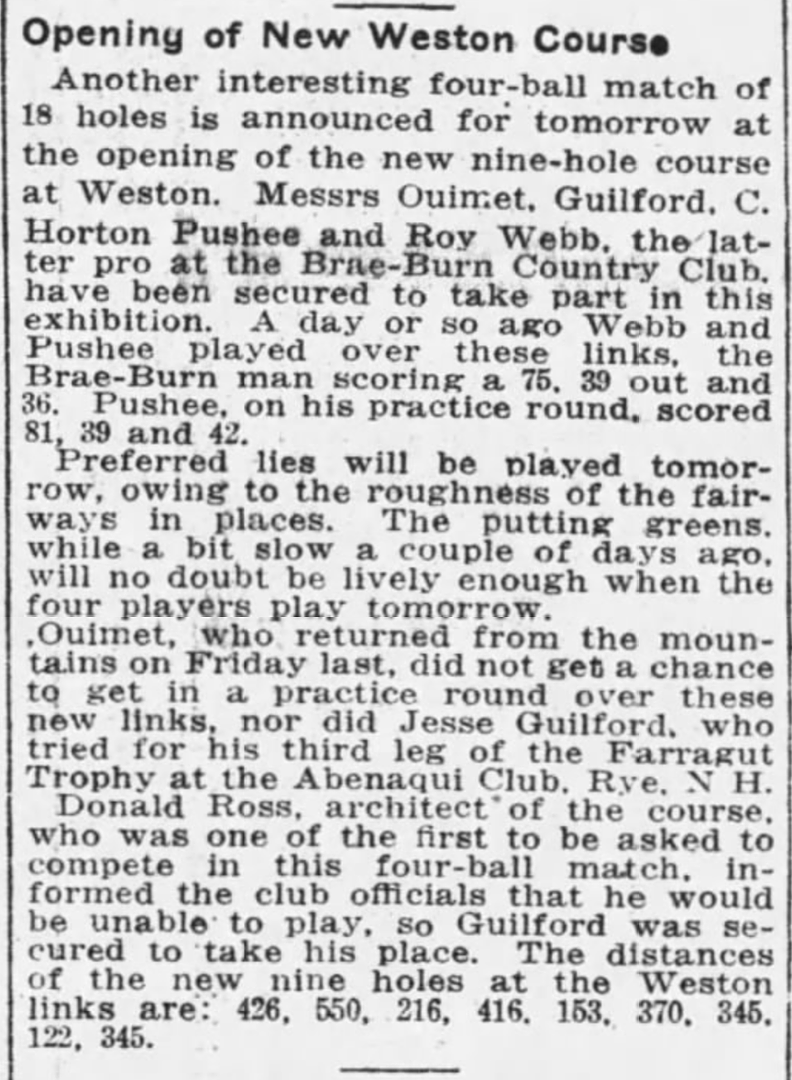
The Ross Plan copied below from 1923 shows the full 18 hole course.
1923 Ross Plan -
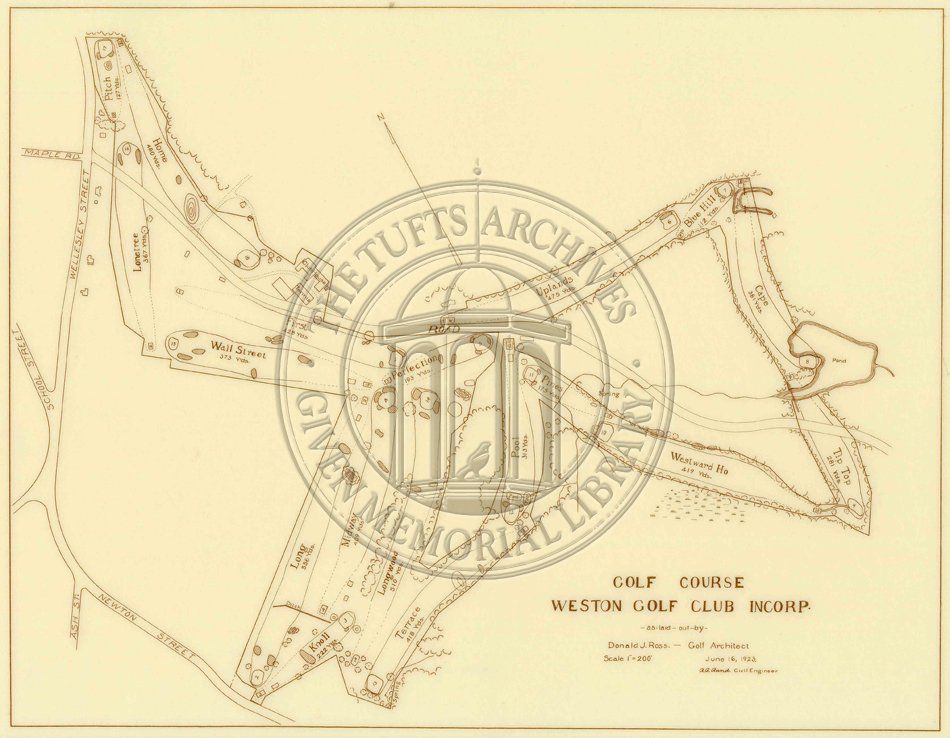
I don't have a date on this image of Weston, but wanted to include it as it is one of my favorite early golf course photos and really shows off the rolling New England countryside and the glacial deposits the early pioneers (in golf and other matters) had to work with.
 Winchester Country Club (Winchester, MA) - 18 Holes, New in 1916, 18 Holes, Remodel in 1928, Still in ExistenceThe 1930 Ross Booklet notes 18 Holes.
Winchester Country Club (Winchester, MA) - 18 Holes, New in 1916, 18 Holes, Remodel in 1928, Still in ExistenceThe 1930 Ross Booklet notes 18 Holes.Ross' first work here started as early as 1909 as described below and later in 1913, as noted in the Feb. 16, 1913 Wilmington Morning Star article posted earlier in the thread. As noted below, his later remodel work took place in 1921 and 1924, as well as in 1928.
Aug. 24, 1909 Boston Globe -

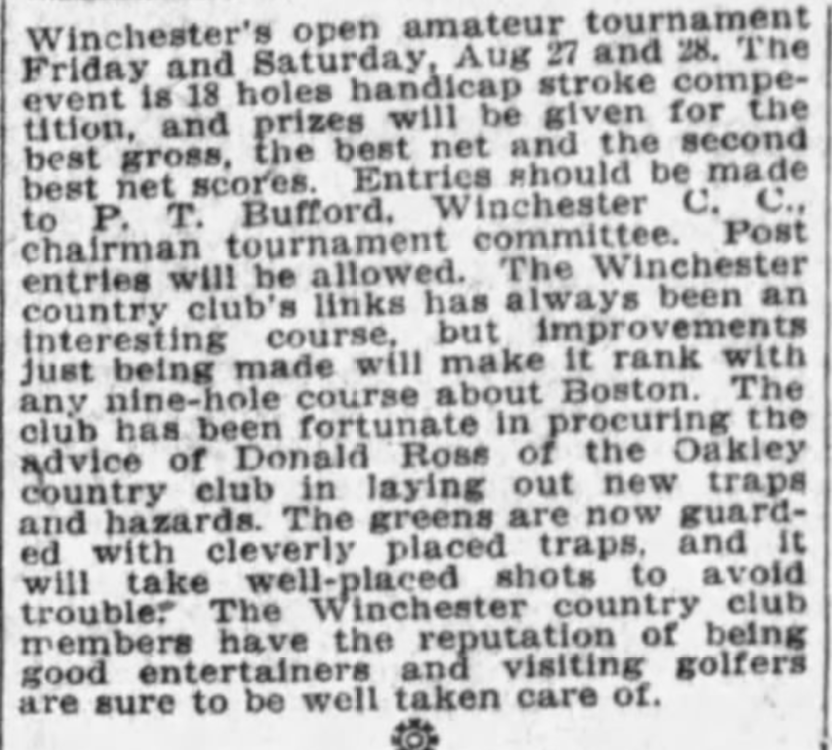
Jan. 26, 1921 Boston Globe -
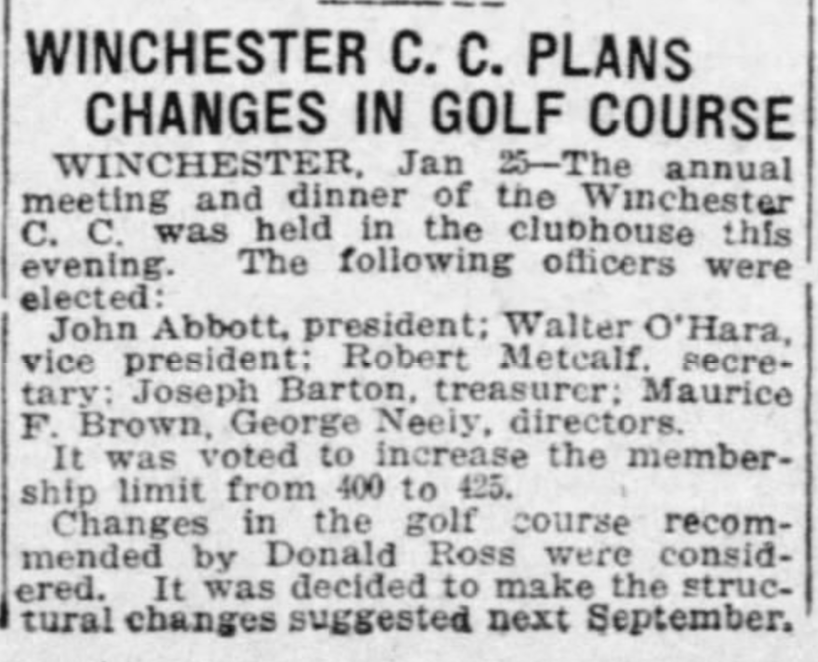
April 18, 1925 Boston Globe -

Jan. 8, 1930 Boston Globe -

 Augusta Country Club (Manchester, ME) - 9 Holes, New in 1916, Still in ExistenceNot noted in the 1930 Ross Booklet.
Augusta Country Club (Manchester, ME) - 9 Holes, New in 1916, Still in ExistenceNot noted in the 1930 Ross Booklet.I don't have anything on Ross here.
Northeast Harbor Golf Club (Northeast Harbor, ME) - 9 Holes, New in 1916, Still in ExistenceNot noted in the 1930 Ross Booklet.The club's website lists Arthur Longwood as responsible for the 9 hole course built in 1916. I haven't seen anything to confirm or contradict this or Ross' involvement.
Shadow Ridge Golf Club (o/k/a Ionia CC) (Ionia, MI) - 9 Holes, New in 1916, Still in ExistenceNot included in the 1930 Ross Booklet.One of the least discussed Ross courses on this site, and one where you can probably find his work pretty much untouched (Joe Hancock has been quietly offering up Shadow Ridge for a while).
See also the Jan. 8, 1916 Pinehurst Outlook article in post #47 above noting a new course in Detroit.
Sept. 22, 1915 Detroit Free Press -

Nov. 1916 American Golfer -
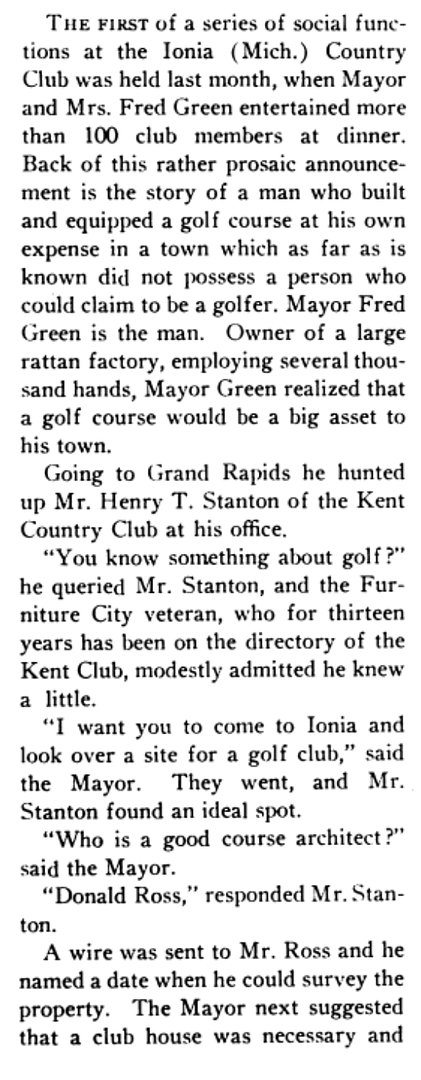
 Tryon Country Club (Tryon, NC) - 9 Holes, New in 1916, Still in ExistenceNot included in the 1930 Ross Booklet.
Tryon Country Club (Tryon, NC) - 9 Holes, New in 1916, Still in ExistenceNot included in the 1930 Ross Booklet.The Givens site has the map copied below, which doesn't explicitly note Ross. Perhaps the fine print does, but the version on their site is too small to make it out.
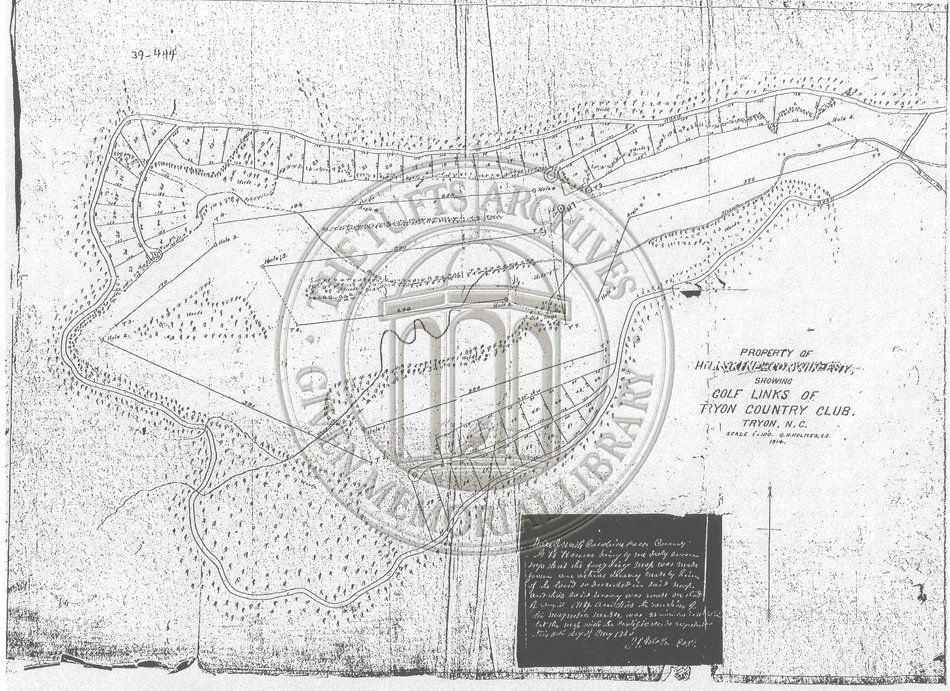 Lake Tarleton Club (Pike, NH) - 18 Holes, New in 1916, NLENot included in the 1930 Ross Booklet.
Lake Tarleton Club (Pike, NH) - 18 Holes, New in 1916, NLENot included in the 1930 Ross Booklet.I have no evidence of Ross' involvement here.
Englewood Country Club (Englewood, NJ) - 18 Holes, Remodel in 1916, NLE in 1976The 1930 Ross Booklet notes 18 holes.See also the June 17, 1916 The Evening Post article in post #47 above.
April 1916 Golf Magazine -
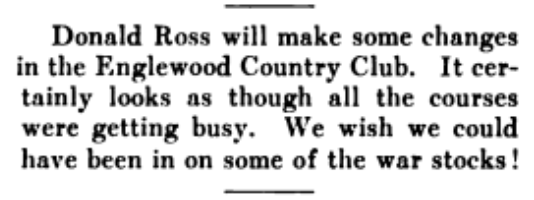
May 1916 Golf Illustrated -
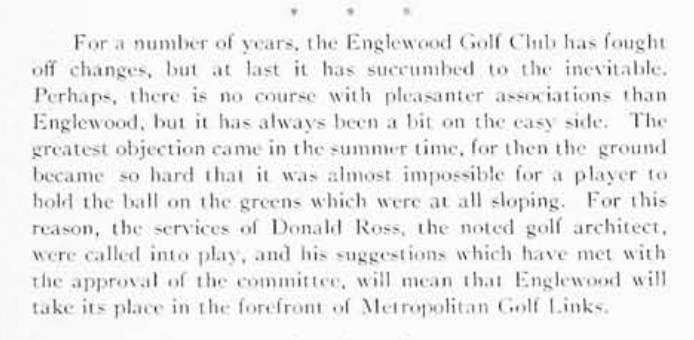
June 1916 Golf Illustrated -
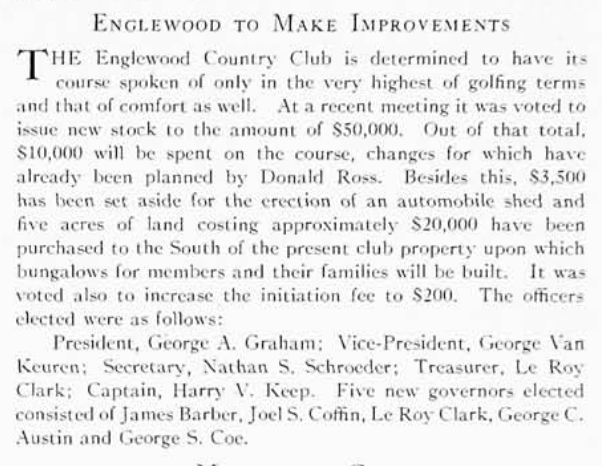 Ridgewood Country Club (Ridgewood, NJ) - 18 Holes, Remodel in 1916, NLENot included in the 1930 Ross Booklet.
Ridgewood Country Club (Ridgewood, NJ) - 18 Holes, Remodel in 1916, NLENot included in the 1930 Ross Booklet.Ross' work here was in 1915.
March 3, 1915 Paterson Morning Call -
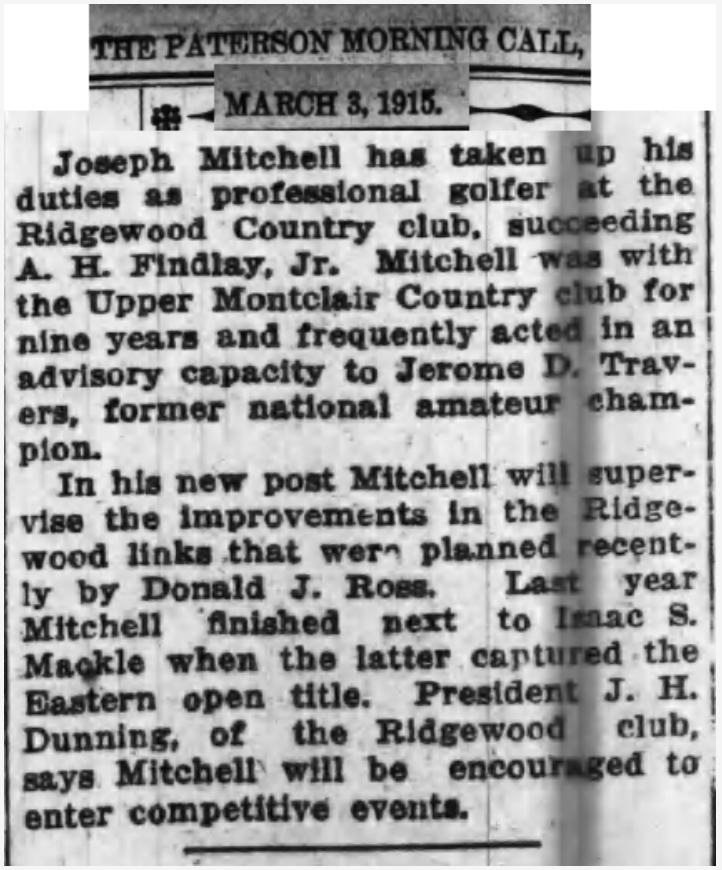
Jan. 24, 1917 Brooklyn Daily Eagle -
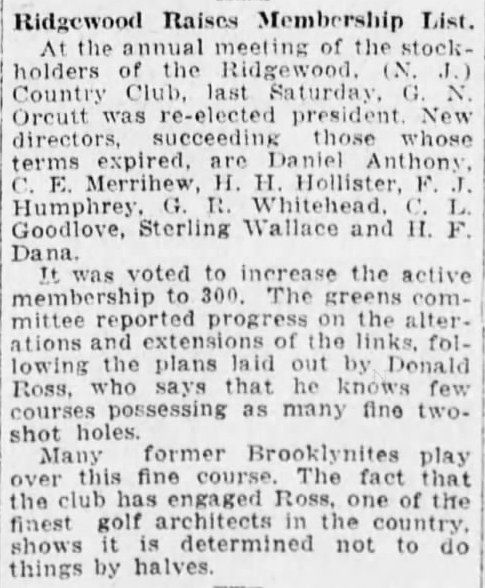 Riverton Country Club (Riverton, NJ) - 18 Holes, Remodel in 1916, Still in Existence2018 DRS Update - Date changed to 1915-17The 1930 Ross Booklet notes 18 holes.
Riverton Country Club (Riverton, NJ) - 18 Holes, Remodel in 1916, Still in Existence2018 DRS Update - Date changed to 1915-17The 1930 Ross Booklet notes 18 holes.This was a R9/A9, as there were only 9 existing holes prior to Ross.
See also the June 17, 1916 The Evening Post article in post #47 above.
Oct. 4, 1917 Evening Public Ledger -
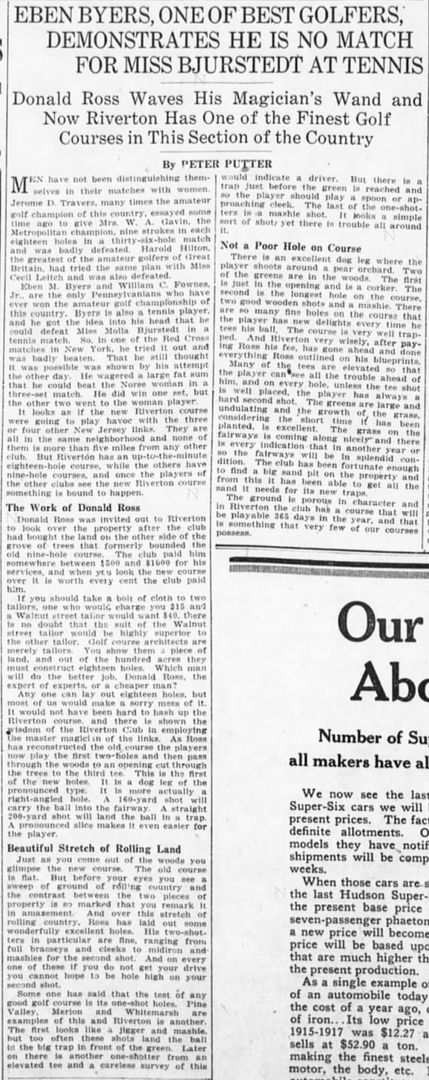
Jan. 10, 1918 The Sun -
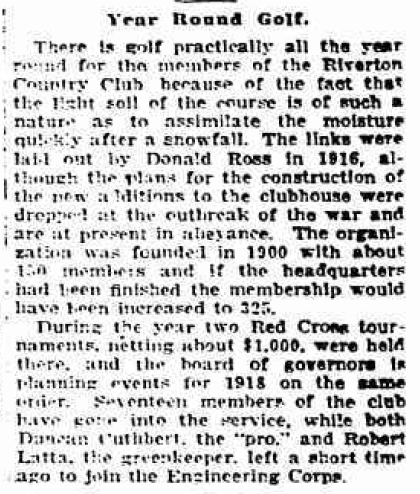 Hudson River Country Club (Yonkers, NY) - 18 Holes, New in 1916, NLE in 1966The 1930 Ross Booklet notes 18 holes.
Hudson River Country Club (Yonkers, NY) - 18 Holes, New in 1916, NLE in 1966The 1930 Ross Booklet notes 18 holes.In 1915 the Saegkill CC decided to update its course by rearranging its present links. The club eventually changed its name in 1916, and brought Will MacFarlane in for the renovation. Two years later their were reports of Willie Tucker remodeling and extending the course. The only mention I have of Ross is his being brought in 1919 to rework the greens.
Sept. 14, 1919 The Sun -
 Irondequoit Country Club (Rochester, NY) - 9 Holes, New in 1916, Still in ExistenceThe 1930 Ross Booklet notes 9 Holes.
Irondequoit Country Club (Rochester, NY) - 9 Holes, New in 1916, Still in ExistenceThe 1930 Ross Booklet notes 9 Holes.The following Oct. 10, 1917 Democrat and Chronicle article suggests this work may have taken place in 1917.
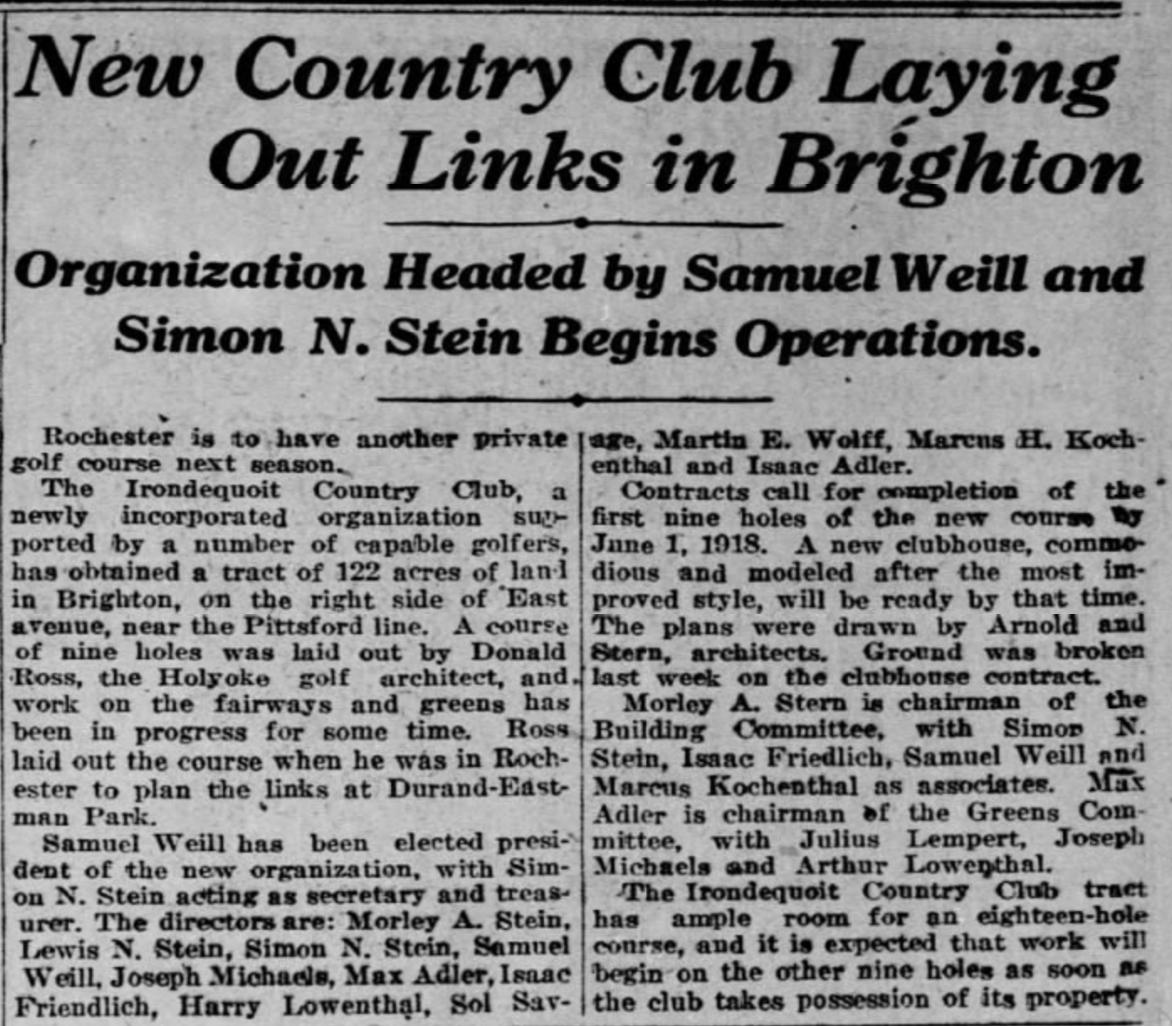
Ross and McGovern would return around 1945 to design an additional 9 holes that would be built after Ross' death.
July 3, 1952 Rochester Democrat and Chronicle -
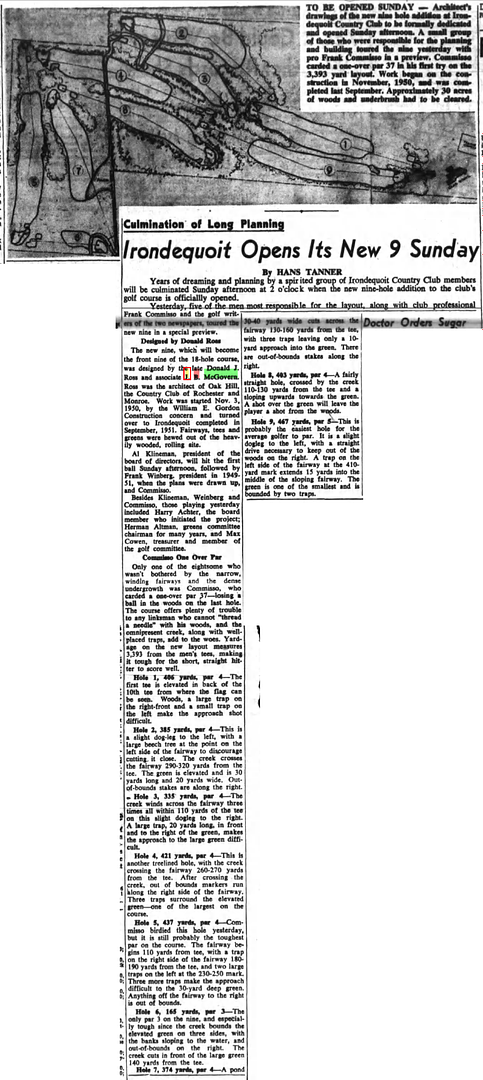
1945 Ross/McGovern Plan -

Course Plan -
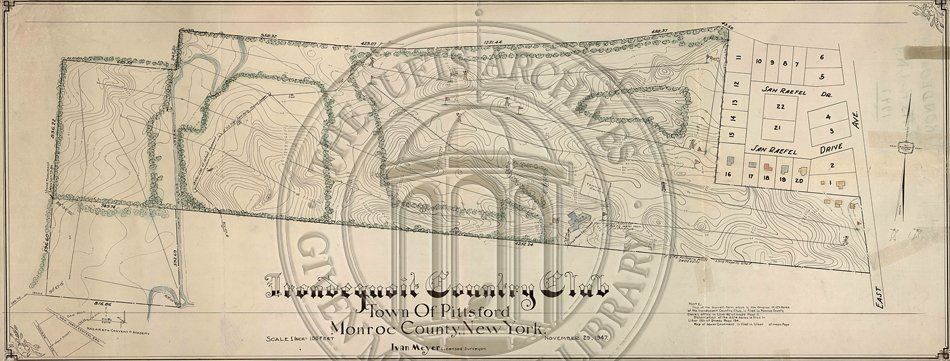 Scioto Country Club (Columbus, OH) - 18 Holes, New in 1916, Still in ExistenceThe 1930 Ross Booklet notes 18 Holes.
Scioto Country Club (Columbus, OH) - 18 Holes, New in 1916, Still in ExistenceThe 1930 Ross Booklet notes 18 Holes.Surprisingly quiet in the press on this on, but undoubtedly all Ross.
May 25, 1919 Cincinnati Enquirer -
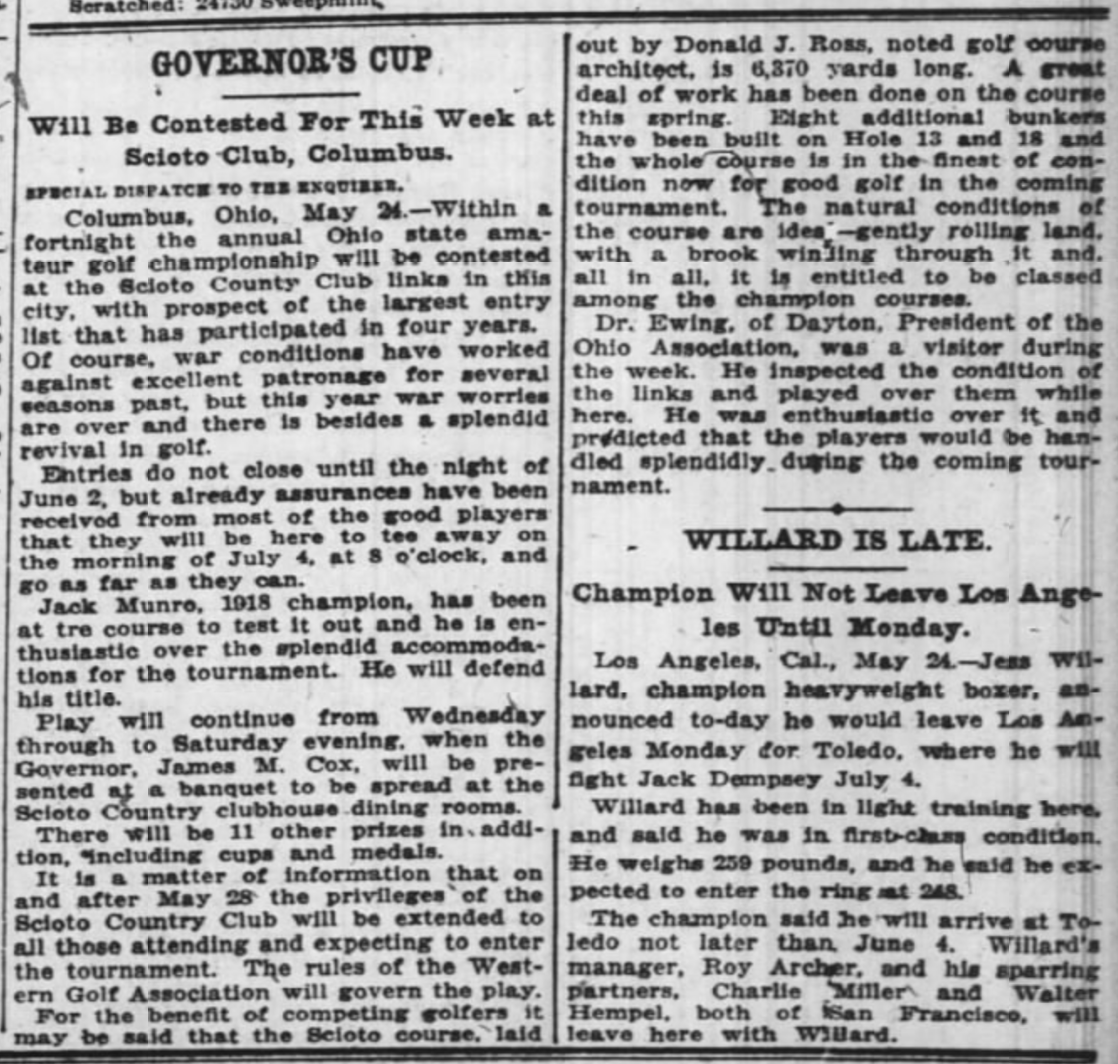
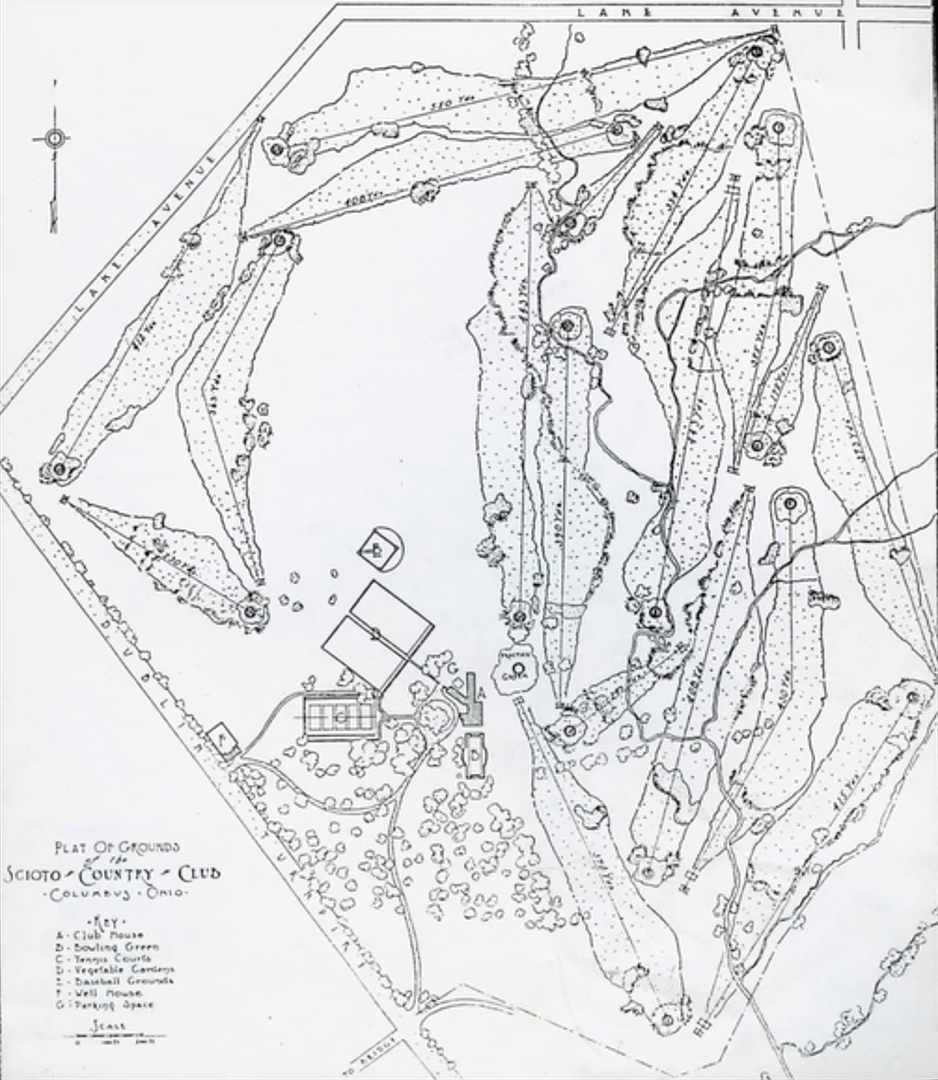
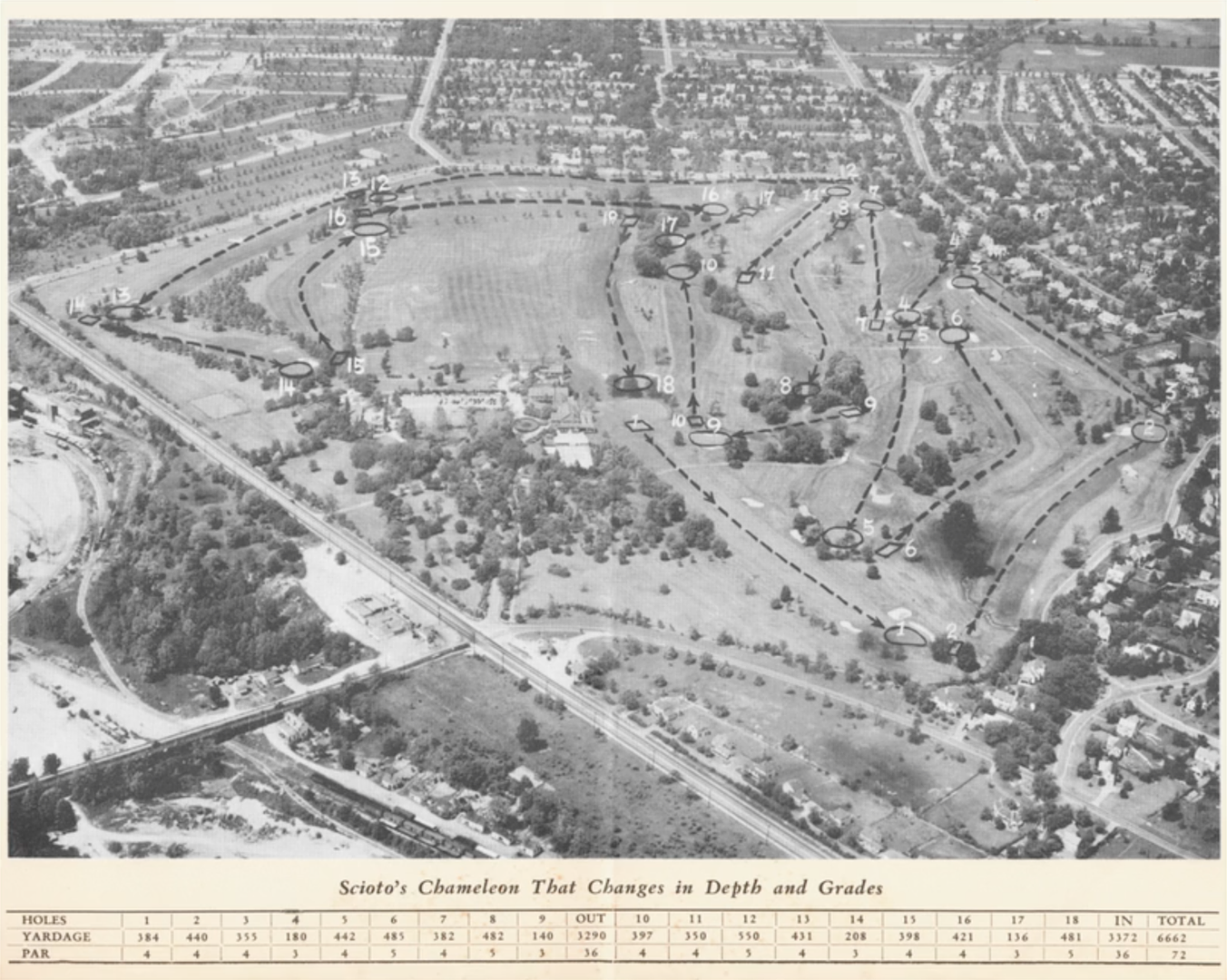
May 1926 USGA Green Section Record -
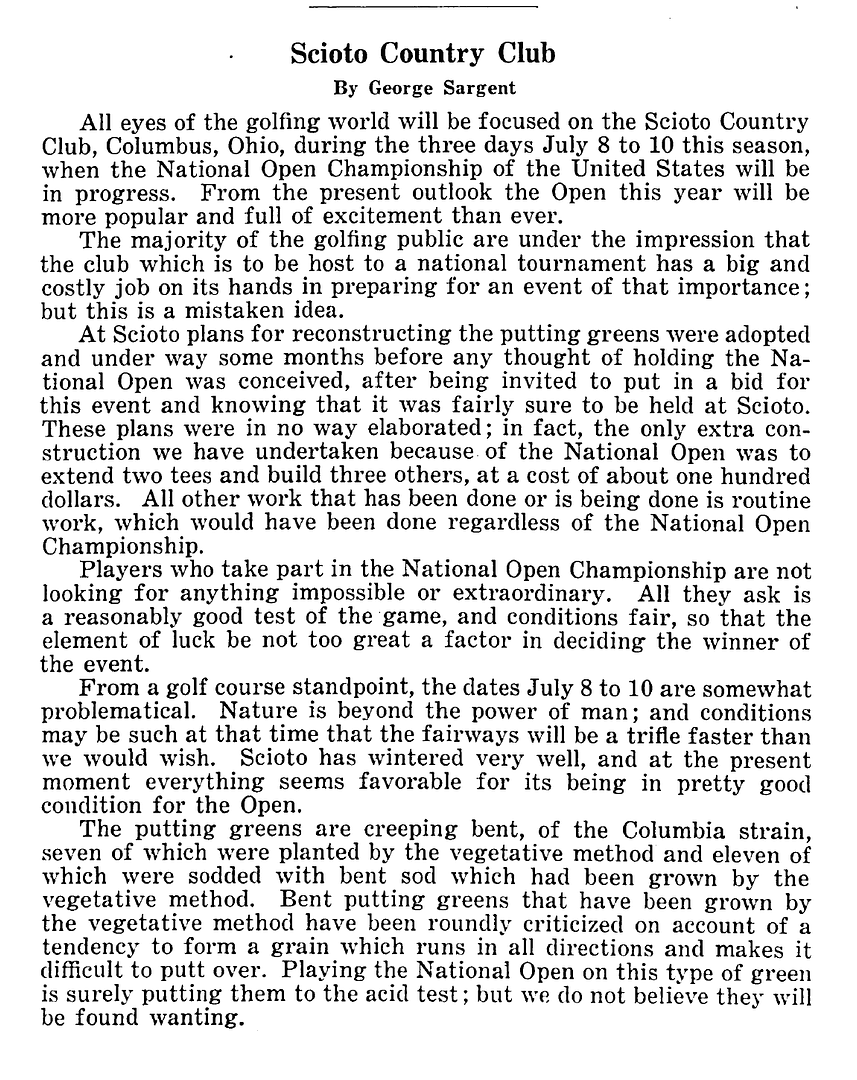
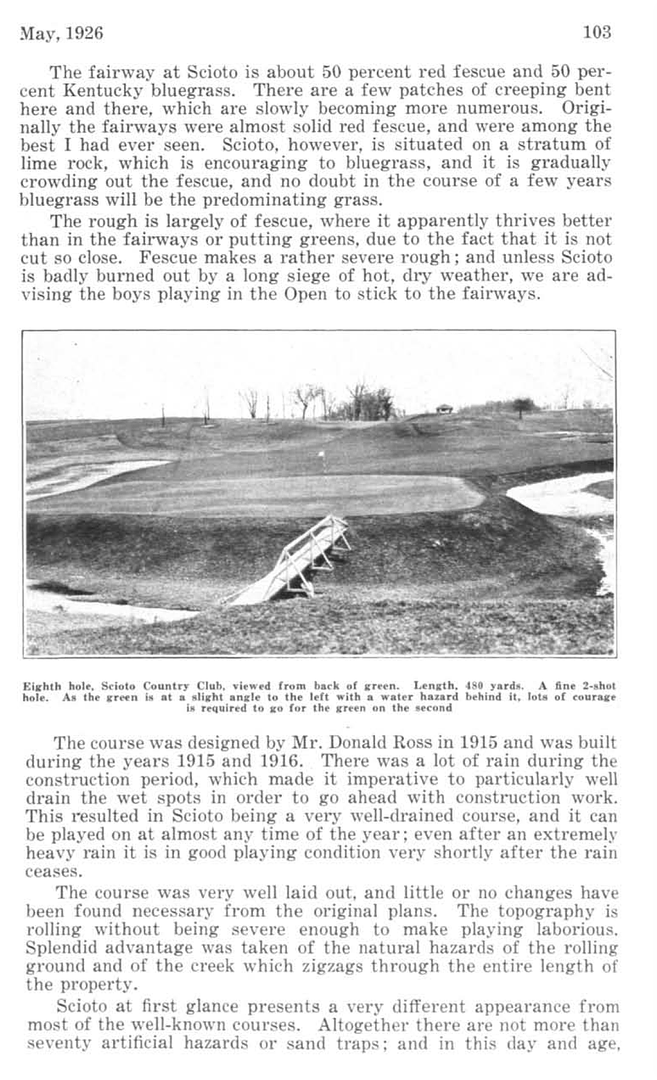
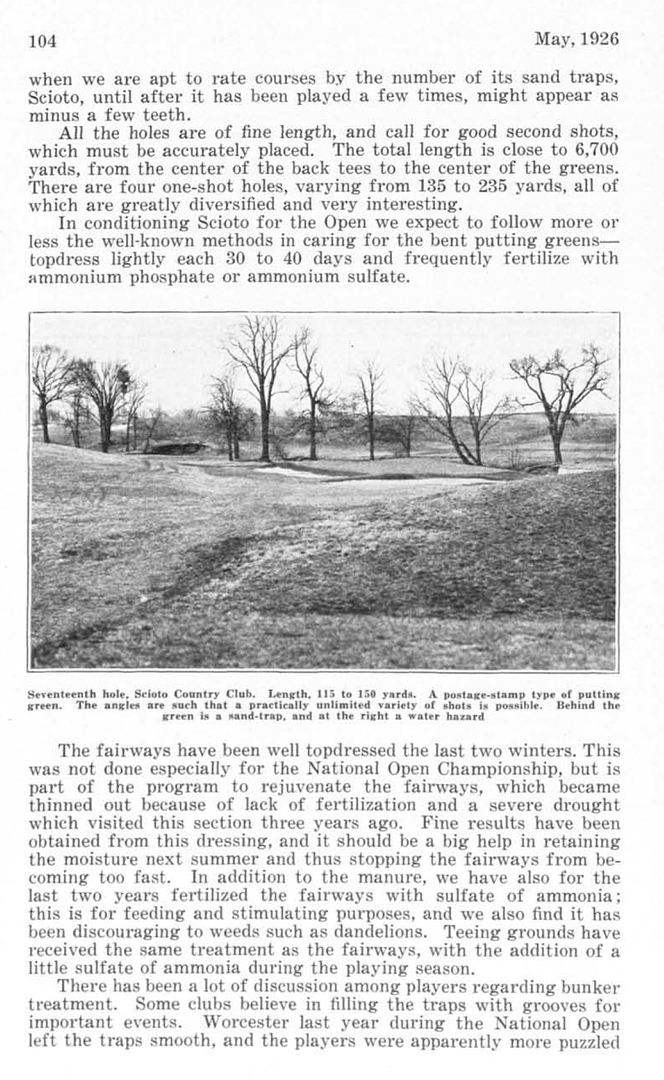
 Conewango Valley Country Club (Warren, PA) - 9 Holes, New in 1916, Still in ExistenceNot included in the 1930 Ross Booklet.
Conewango Valley Country Club (Warren, PA) - 9 Holes, New in 1916, Still in ExistenceNot included in the 1930 Ross Booklet.In addition to the article below, see the Ross Letters and Notes included in post #175 in this thread and the notation of a new course in Warren in the Jan. 8, 1916 Pinehurst Outlook article in post #47 above.
April 28, 1928 Warren Tribune -
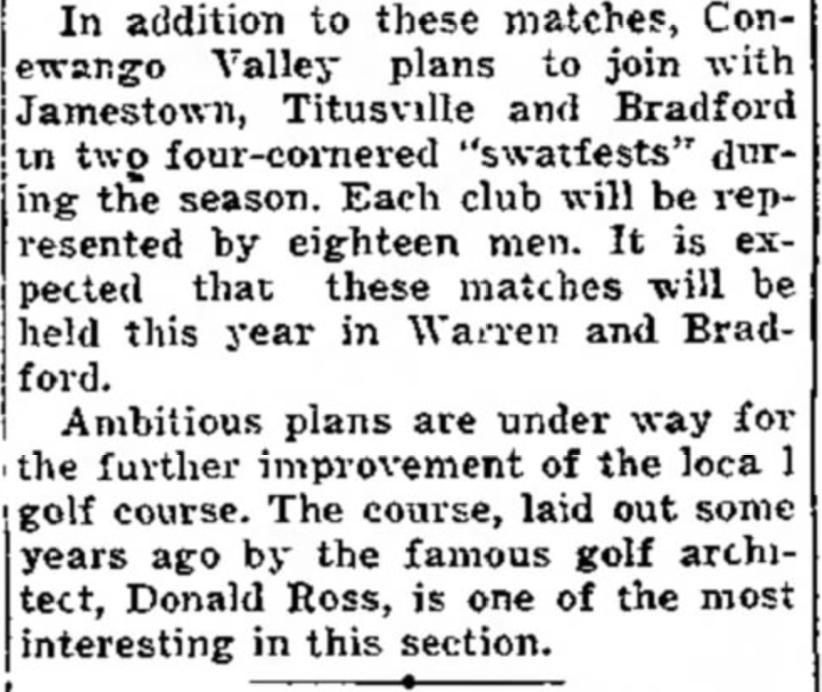 Gulph Mills Country Club (King of Prussia, PA) - 18 Holes, New in 1916, Still in ExistenceThe 1930 Ross Booklet notes 18 Holes.
Gulph Mills Country Club (King of Prussia, PA) - 18 Holes, New in 1916, Still in ExistenceThe 1930 Ross Booklet notes 18 Holes.July 8, 1916 New York Times -
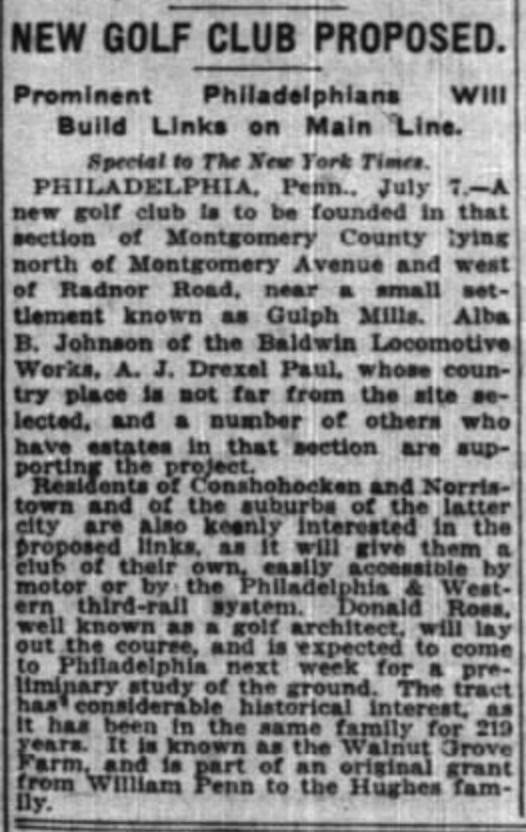
July 1, 1918 Evening Public Ledger -
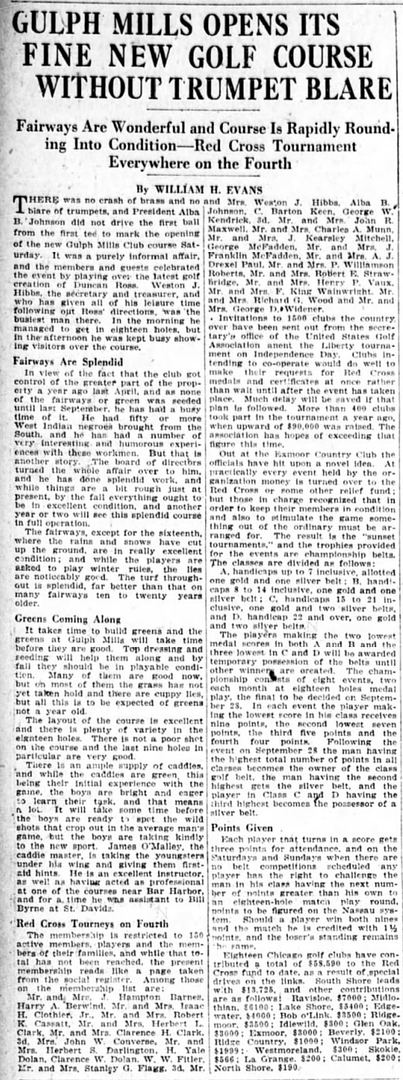
July 15, 1918 Evening Public Ledger -
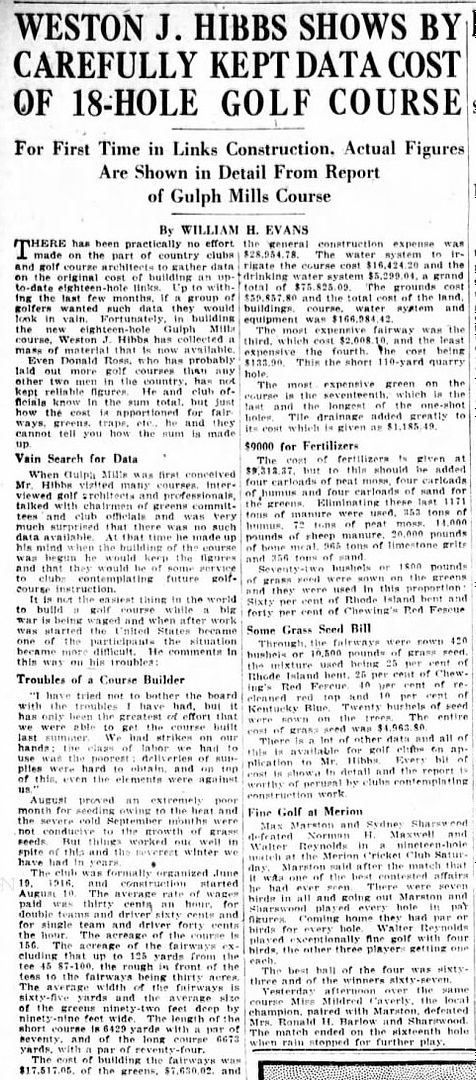 Kahkwa Club (Erie, PA) - 18 Holes, New in 1916, Still in Existence2018 DRS Update - Changed to 18 Holes, New in 1916-19, 18 Holes, Remodel in 1927The 1930 Ross Booklet notes 18 Holes.
Kahkwa Club (Erie, PA) - 18 Holes, New in 1916, Still in Existence2018 DRS Update - Changed to 18 Holes, New in 1916-19, 18 Holes, Remodel in 1927The 1930 Ross Booklet notes 18 Holes.According to the March 1922 edition of Golfers Magazine, the Ross course was completed in 1918, not sure when Ross' involvement started.
See also the June 17, 1916 The Evening Post article in post #47 above discussing a remodel for the Erie CC.
March 1922 Golfers Magazine -
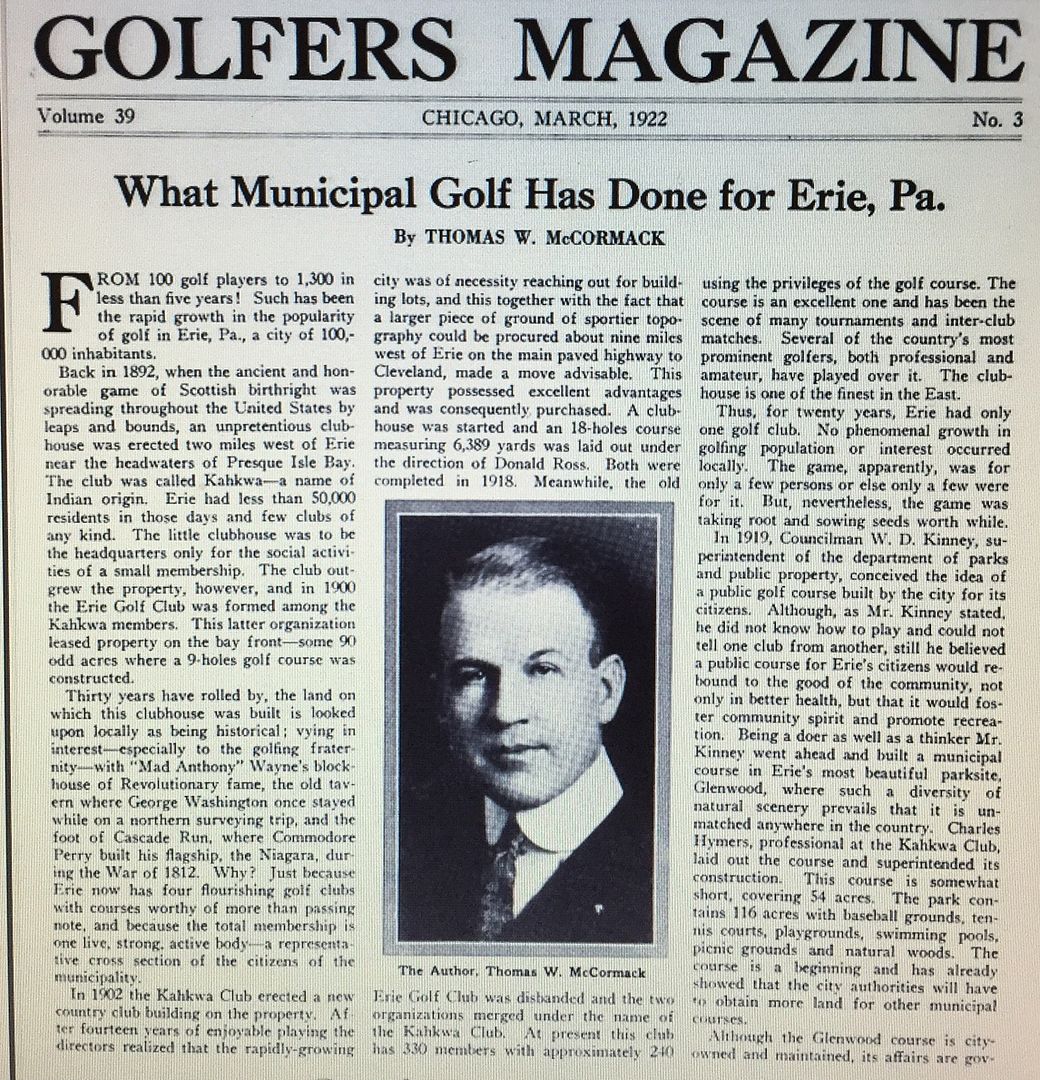
Ross Plan -
 Homestead Old Course, The (o/k/a Virginia Hot Springs) (Hot Springs, VA) - 18 Holes, Remodel in 1916, Still in ExistenceNot included in the 1930 Ross Booklet.
Homestead Old Course, The (o/k/a Virginia Hot Springs) (Hot Springs, VA) - 18 Holes, Remodel in 1916, Still in ExistenceNot included in the 1930 Ross Booklet.I have nothing to confirm Ross at any time at Hot Springs other than the course map copied below which can be found on the Givens site. We touched on the history of the course earlier this year in another thread -
http://www.golfclubatlas.com/forum/index.php/topic,64670.msg1541424.html#msg1541424.
Ross Plan -
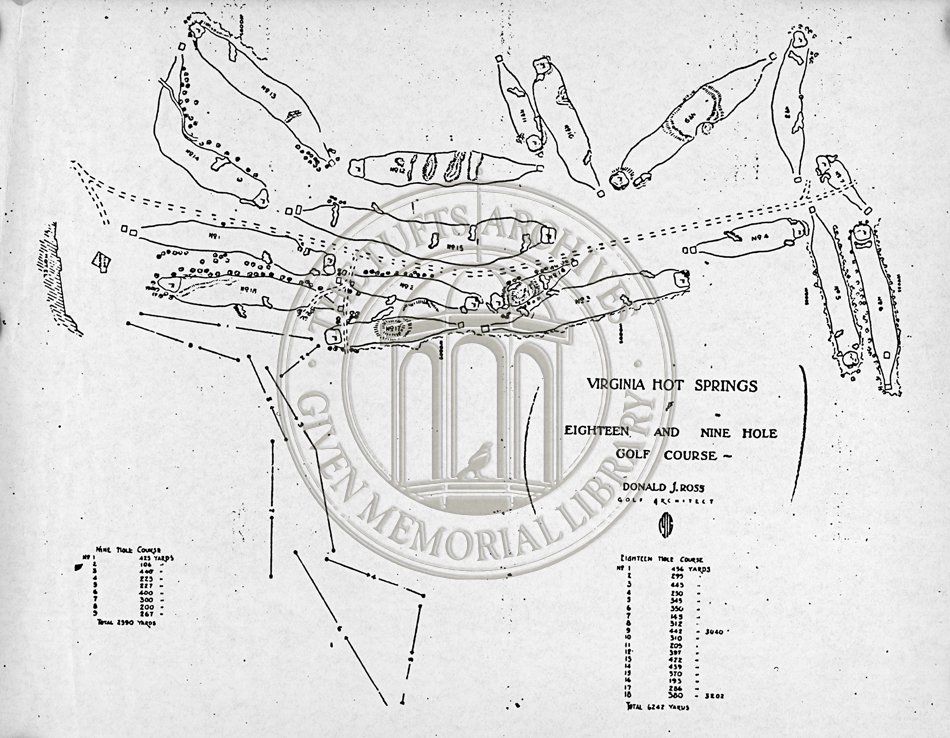 Woodlands Golf Course (f/k/a Hampton Roads GC o/k/a Hampton GC) (Hampton, VA) - 18 Holes, New in 1916, Still in Existence
Woodlands Golf Course (f/k/a Hampton Roads GC o/k/a Hampton GC) (Hampton, VA) - 18 Holes, New in 1916, Still in Existence2018 DRS Update - Changed to 18 Holes, Remodel in 1928
The 1930 Ross Booklet notes 18 Holes.I don't have anything addressing Ross here in 1916, and the Annual Guides don't note an 18 hole course until 1923. Ross did submit plans to rework the course in 1929.
Jan. 30, 1929 Daily Press -
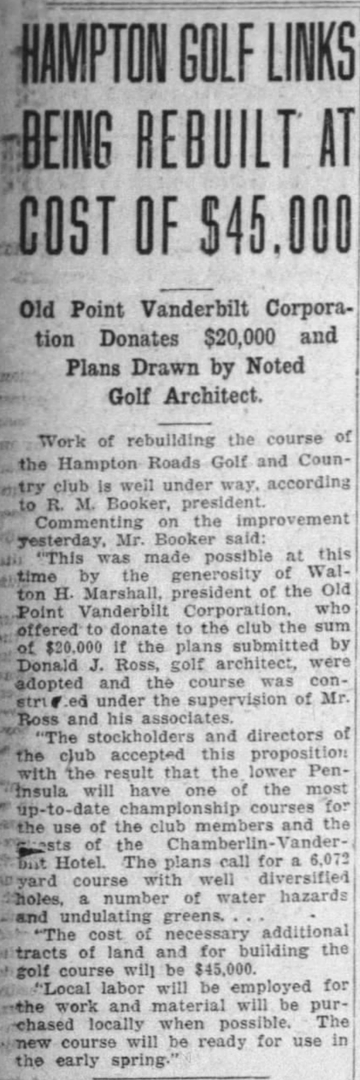
Oct. 6, 1935 Daily Press -
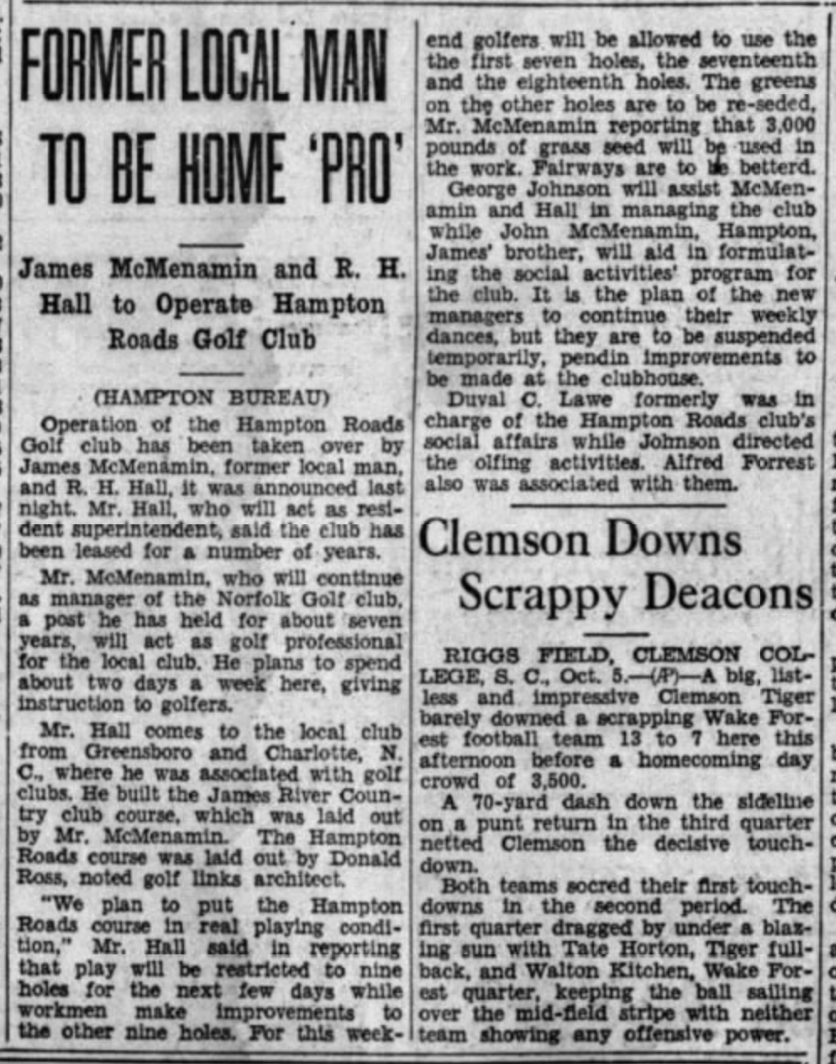
Nov. 18, 1935 Daily Press -
